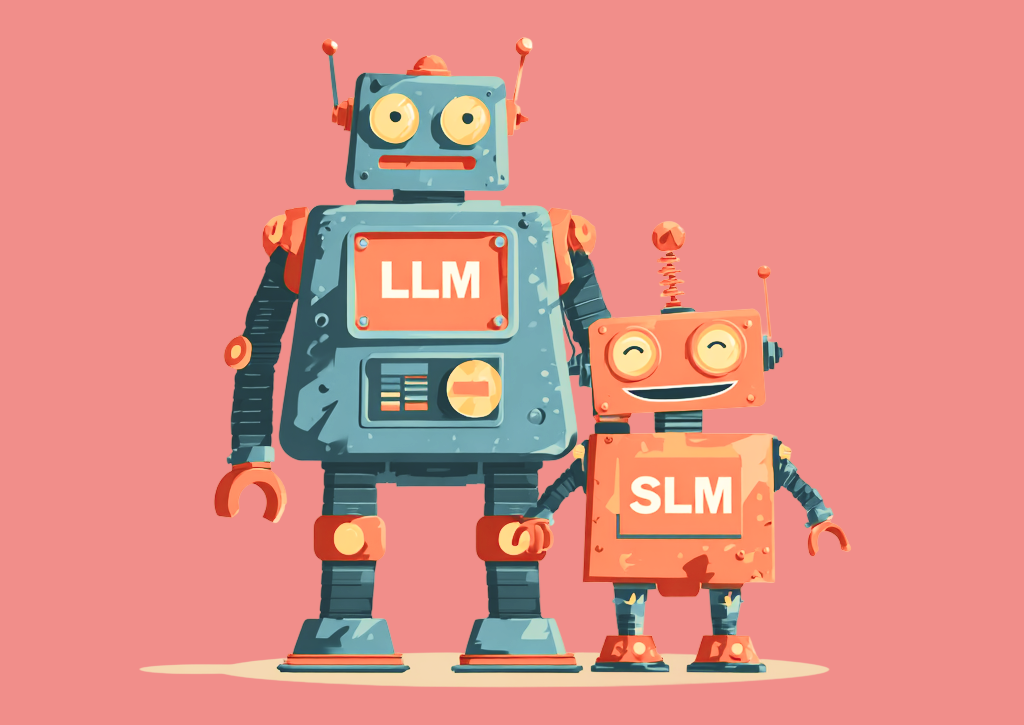The AI world has long been mesmerised by scale. Bigger models, more parameters, more compute — that seemed to be the formula for breakthroughs. But now we are entering a countervailing era: Small Language Models (SLMs) are starting to shoulder real workloads, blurring the lines between “toy models” and industrial-grade intelligence.
At a Glance

A New Class of Tasks for Compact Models
Historically, small models were limited to simple tasks: autocomplete, grammar correction, sentiment analysis. Anything needing deep reasoning, chains of thought, or multi-step planning fell squarely to Large Language Models (LLMs). But that boundary is shifting.
A recent influential paper “Small Language Models are the Future of Agentic AI” argues that agentic systems — that is, systems composed of smaller models orchestrated to solve sub-tasks — are precisely the setting where SLMs may shine. Their thesis:
Many AI tasks are decomposable, repetitive, or domain-limited. In those niches, a network of small, specialised models can outperform a monolithic LLM in cost, latency, robustness, and maintainability.
Meanwhile, institutions like the Alan Turing Institute have pushed a 3B-parameter model to deliver near-frontier reasoning in health queries by combining retrieval augmentation, test-time scaling, and chain-of-thought fine-tuning. Their success shows that even “tiny” models, when architected smartly, can encroach into domains previously considered too hard.
In industry, commentators in The Case for Using Small Language Models (Harvard Business Review) argue that SLMs might become “the backbone of the next generation of intelligent enterprises” — not replacing LLMs wholesale, but handling the everyday, domain-specific tasks where huge models are overkill.
Another signal: Tech UK published a position piece urging organisations to “think smaller” with AI adoption. They argue that many real-world deployments stall because generic models are expensive to maintain, hard to integrate, and not tailored to organisational needs — and that SLMs may offer a more sustainable, scalable alternative.
So the trend is clear:
Anthropic’s “Haiku”: A Case Study in Compact Ambition
To ground this in a recent example, take Anthropic’s new model, Claude Haiku 4.5, a scaled-down version of their Claude family. It’s billed to offer performance close to their Sonnet 4 baseline, but at “one-third the cost and more than twice the speed”. That positioning is exactly what we see as the new frontier: delivering high-end tasks with more compact infrastructure.
Earlier versions of Haiku were already in the Claude 3 family: Claude 3 Haiku was introduced as their “fastest and most affordable model in its intelligence class,” with strong benchmarks and multimodal capabilities. Haiku is explicitly intended to sit between ultra-light models and the big flagship ones (Sonnet, Opus). The idea is: you get most of the utility with lighter cost.
While Anthropic’s models are not always classified as “SLM” by strict parameter thresholds, Haiku is a perfect embodiment of the trend: making intelligence more compact, cheaper, faster — and gradually encroaching on tasks traditionally reserved for large models.
Why Compact Models Are Rising: Key Drivers
1. Cost & Resource Efficiency
Running gigantic LLMs is expensive: GPU time, memory, energy, infrastructure, and maintenance. SLMs, by reducing model size and using quantization / pruning techniques, dramatically lower those costs.
2. Latency & Responsiveness
Many applications demand real-time or near-real-time response (mobile assistants, edge robotics, IoT). Smaller models have shorter inference times and lower latency — a decisive advantage in many settings.
3. Privacy and On-Device Deployment
Compact models can run locally or on-device, avoiding needing to send sensitive data to remote servers. This is crucial for sectors like healthcare, finance, or government. The Alan Turing Institute’s work emphasises precisely this: deployment in compute-constrained or privacy-sensitive environments.
4. Composability and Agentic AI
Instead of one giant model trying to do everything, we get architectures made of many smaller models, each specialised. The “agentic AI” viewpoint from the SLM paper argues for this modular, distributed paradigm.
5. Test-Time Scaling Tricks
Techniques like iterative decoding, reranking, chain-of-thought prompting, self-consistency, or ensemble of tiny models let compact models approximate reasoning that would otherwise require a giant model. This gives SLMs leverage beyond their raw parameter count.
6. Domain Specialisation / Fine-Tuning Gains
Because SLMs are smaller, they are easier and faster to fine-tune on domain-specific data. In many practical systems, domain knowledge + lightweight model often outperforms a generalist large model on that domain.
Challenges and Caveats
Generalisation / Out-of-Distribution Robustness
A compact model fine for legal documents may flounder on a novel scientific text unless retrained or adapted.
Context Window Limits
Many SLMs have shorter memory. Tasks needing long-context (100k tokens) may still require heavy models or context-chaining solutions.
Accuracy Ceiling
There’s still a performance gap in extreme reasoning, creativity, large-scale summarisation, or connecting distant facts.
Efficiency of System Design
To get full value, you need smart orchestration — hybrid setups, retrieval systems, workload partitioning.
Benchmarking and Hype
Companies will often market a compact model as achieving “near LLM performance” in certain benchmarks — but reality varies across tasks and domains.
We are witnessing the rise of a new bifurcation in AI: one path remains the domain of monolithic LLMs, tackling the hardest general tasks; the other path is paved by efficient, compact models — models that may well become the backbone of real-world, edge, and agentic systems. And with new entrants like Anthropics’s Haiku series challenging the status quo, that second path is no longer a backwater; it’s where the next wave of practical AI is being built.


